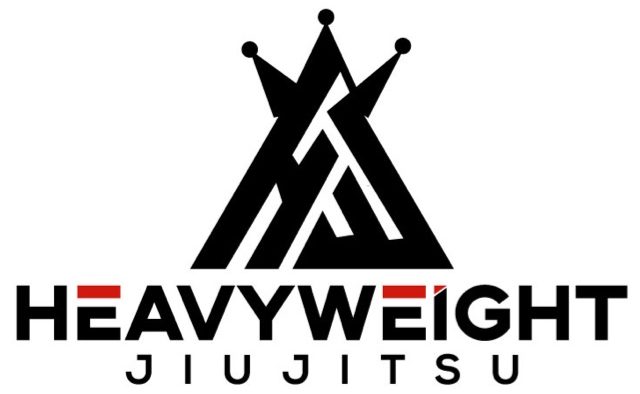Are You Puzzled?
How do you intend to reach your BJJ and fitness goals? Train? Think about training? Then Train more? Good start. But what are you going to train? When? Why? How much? With what frequency and intensity? How do you track your progress?
Many people get stuck developing their personal program. I’ve written before about setting goals, and shared my own personal goals with you. BJJ is the primary “anchor” by which all of my other training goals will be hitched. My strength training, conditioning, mobility, flexibility, and other “puzzle pieces” all are intended to develop and enhance my strengths and shore up my weaknesses on the mat.
Let’s start by laying out a potential week in my plan.
| Sunday | a.m. Jump Rope | p.m. Strength Training + Isometrics | ||
| Monday | a.m. BJJ + Grappling Drills + Finisher + Flexibility | |||
| Tuesday | a.m. Metabolic Conditioning | p.m. Mobility + Core | ||
| Wednesday | a.m. BJJ + Grappling Drills + Grips + Flexibility | |||
| Thursday | a.m. Weighted Walking | p.m. Strength Training + Isometrics | ||
| Friday | a.m. BJJ + Grappling Drills | p.m. Grips + Flexibility | ||
| Saturday | a.m. Metabolic Conditioning + Core |
The starting point to filling out the schedule is that I emphasize my highest priority items first. I will train BJJ or No GI minimally two times per week. I will also do two Strength Training and Metabolic Conditioning sessions each week. Those are non-negotiable.
BJJ and No GI are usually on opposite days at my academy (M/W/F). Next, adding in my Strength Training (Su/Th) on opposite days and separating those workouts by at least 2 days gives me adequate recovery for my BJJ sessions and my other more demanding sessions of the week. The same applies to Metabolic Conditioning (Tu/Sa). I like to do them as a dedicated session to improve aerobic/anaerobic capacity and work on other important grappling attributes (carrying heavy objects, jumping, throwing, sprinting, pushing, pulling, etc.). After staggering these workouts in my week, I’ll add in all my other specific targets to work on. Because my target goals are complementary and fit together (like puzzle pieces) it makes sense to work on them together. I illustrate this below in the section about “Bundling” workouts.
Weekly Punch Card
One tool I like to use is a weekly “Punch Card”. It’s simple and flexible and lets me prioritize my training. Here’s how I use it. As I mentioned above, BJJ, Strength Training, and Metabolic Conditioning workouts are non-negotiable workouts added to the template first and then I add and categorize the other target areas based on where they complement by primary focus area. I strive to complete all workouts (punch the card) in the first two columns every week. I target a minimum of two sessions a week to work on them. This should be enough that, over the course of a year, I am able to measure and see demonstrable progress. My main focus with this tool is verifying that I am completing my most important workouts of the week. Here is an example of my last week of training below.
| HWBJJ Focus Areas | Weekly Punch Card | Optional Training | ||||||
| BJJ training | BJJ/No GI | BJJ/No GI | BJJ or No GI | |||||
| Strength Training | Strength Training | Strength Training | Strength Training | |||||
| Grips | Grips | |||||||
| Core – Rollouts |
Core – Mixed |
|||||||
| Isometrics | Isometrics | |||||||
| Metabolic Conditioning |
|
Jump Throw Sprint (Intervals) | (Explosive speed focus) | Push/Pull/Carry (Strongman drill focus. Total Rep focus) | ||||
| Finisher | Finisher | Wildcard | ||||||
| Grappling Drills | Grappling Drills | Wildcard | ||||||
| Mobility & Flexibility | Handstand | Back bridge | Wildcard | |||||
| Yoga | Yoga | Wildcard | ||||||
| Recovery | Jump Rope or Weighted Walking or Foam Roller | Jump Rope or Weighted Walking or Foam Roller | Wildcard | |||||
|
Legend |
||||||||
|
Completed |
||||||||
|
Not Completed |
||||||||
The last column is an “optional” column that I will use to enhance certain “feelings” I get when training. If I have a rare opportunity to squeeze in another BJJ session during the week, I’m going to do it and potentially take something else come off the list. If I find, for example, I am really experiencing rapid gains on my Deadlift (a goal of mine this year) and I want to prioritize my strength training even more, I can add additional optional work to that column and reduce (i.e., put on maintenance) or remove other items to reshape my focus for my goal.
The bottom line is, I always try to accomplish the first two columns worth of workouts in my plan and I have flexibility to adapt my plan based on feedback from my body and whether I’m making progress toward my goals. In order to make the most of my training sessions, I prefer using two different techniques that are easy to implement: Bundling and Bite-sized workouts.
Bundling workouts
“Bundling” is a term I use to simply refer to doing more than one thing within my training window. Workouts primarily center on one area, such as BJJ, Strength Training, or Metabolic Conditioning. Very rarely will I perform both types of workouts together, or on the same day. It has happened, as I like to experiment to see what my body responds to. However I often find my joints are too sore from BJJ training to put full effort into a Strength or Metabolic session.
I usually train BJJ in the late morning/early afternoon. In order to prepare for the session, often I will use Grappling drills, or a Yoga sequence to loosen up my joints, muscles, and get blood and oxygen flowing. Grappling drills are often a part of our BJJ session warm-ups as well. After the BJJ session, I will very often spend an additional 10-20 minutes performing more Grappling drills. I will also very often perform a Finisher. Finishers are a way to blast through plateaus; mental and physical. You’ll often be fatigued after a challenging BJJ session. Making the effort to perform 10-20 wind sprints, bodyweight GPP, tire flips, heavy bag carries, sledgehammer swings, etc., will accumulate monster benefits over time. Extra rolling sessions after class can often give you an extra test as well to finish off your workout. At the end, I’ll also use yoga sequences to try to improve my flexibility, while the body is already warm. Another option is to add core or grip-specific work at the end of your BJJ training. In this manner, I end up bundling anywhere from 2-4 different training needs together, which is an efficient option when your number of training days during the week is limited. An example session might look like this:
| Warm-up (Grappling drills) | 10 min |
| BJJ-specific training (drilling, technique, rolling) | 60 min |
| Finisher (e.g., Tire flips, sprints, extra rolling) | 10 min |
| Yoga sequence (for explosive strength) | 10 min |
| Total workout time | 90 min |
| Total target areas worked | 4 |
With at least 22 target areas to train each week, getting 4 checked off my punch card in one training session is a step in the right direction.
Bite-sized workouts
“Bite-sized” refers to having a focused mini-workout to perform. I purposefully keep these sessions brief so my focus can be strong and reserve them for when I’m pressed for time (e.g., I have a 5-10 minute window). The beauty of these is that you can spread them out throughout the day and really accumulate progress if you stick with it. Grip work is a great candidate for these workouts. I often carry a few tools with me and use them throughout the day.
I’ll sit in my car, in the office, or even in meetings and use these tools all day long. The Pinky ball is a great tool for working individual finger strength. It’s primarily an isometric strength tool (i.e., you’ll hold it for time as you fight the compressed rubber that’s fighting you back). Any corner store should carry these and they are as portable as it gets. A quick Google search returns many options.
The captain of crush grippers are great for overall hand squeezing strength. They typically come in a set with increasing levels of difficulty. They will be hard to outgrow.
Captain of Crush: (http://www.captainsofcrushgrippers.com/)
Note: I have no affiliation with any of these products.
Bodyweight-only work is also a good option to do in bites. 20 pushups and 20 squats performed every hour you’re awake adds up fast – you’ll log in hundreds of reps. Another option is isometric work. You can almost always find a door jam to push against or pull against from multiple angles. Ross Enamait of www.rosstraining.com has been a big proponent of these types of options, whether you are at home, in the car, in the office, etc. You can do work anywhere. You can see great examples from him at his website and in the video below.
The takeaway is this. Your program shouldn’t be a box of loose and unmatched puzzle pieces. Use a few simple techniques to “anchor” your program, organize it, prioritize it, and put it together.

If you have questions about details of my program or your own program, leave them in the comments below, email me at heavyweightbjj@gmail.com.







2 comments